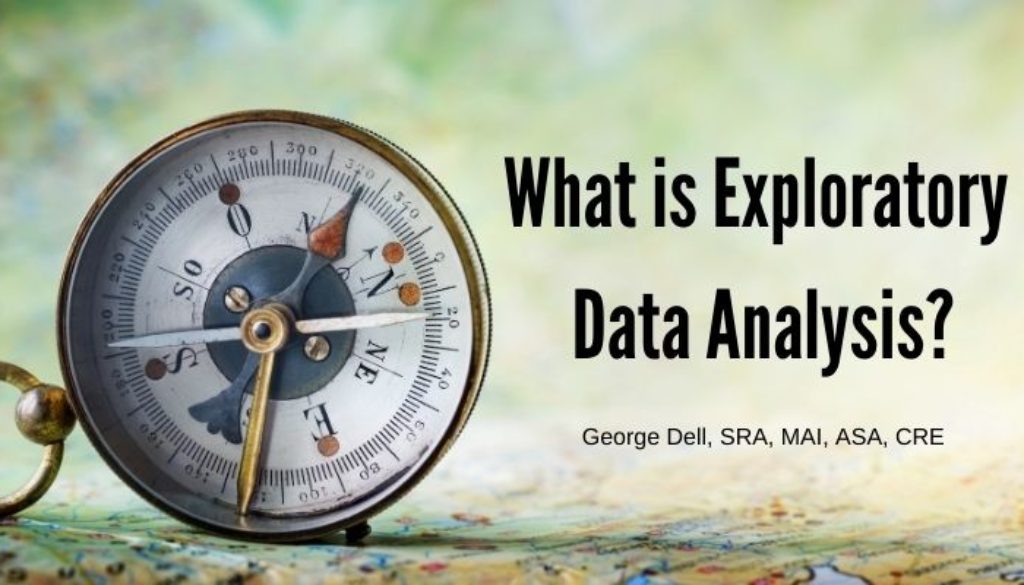Exploratory Data Analysis (EDA) is an implicit part of traditional appraisal. The appraiser invokes education, training, and market area familiarity to decide on comparables and adjustments to be made. The process takes place fully in the mind of a competent practitioner.
EDA is expressed in quasi-governmental standards (USPAP) as a focus on the subject property’s: “location and physical, legal, and economic characteristics.” This may be deceptive because the actual research subject of valuation is the market. Specifically, the Competitive Market Segment© (CMS).
In The Appraisal of Real Estate, this ‘exploring’ is spread over the first three steps of the boxed ‘process’: Identification of the problem; Scope of Work Determination, and; Data Collection and Property Description. Market analysis and optimal-use analysis do not begin until the above three steps are completed.
In Data Science, EDA is a distinct activity, with clear objectives. Remember that data science requires the analyst to have field-related expertise! This enables sharper judgment through clarifying and enhancing modeling decisions.
Exploratory Data Analysis helps clarify and augment the initial parts of the valuation process. This can be called the hypothesis of the analysis. Sorta like scope of work, but broader.
The first objective of the asset analyst, using EBV (Evidence Based Valuation)© is to define and download all the data necessary. This is a judgment call. It’s made easier because the objective is inclusive. The goal is to include all the data you think you will ever be need for this project. The judgment is smarter because it is simpler. All the data. Too much does no harm. Too little and you may have to go back.
The analyst’s goal is to never have to go back.
EDA accomplishes this by giving the analyst a clear picture of the data. You can see patterns and possible causes of what is observed:
- Clarify acceptable assumptions.
- Infer likely models and approaches.
- Confirm or question the data selection.
- Draw attention to outliers and other trends.
EDA makes it possible to focus on what valuation really is. It is a study of markets. Specifically, the viewing of the Competitive Market Segment (CMS)©, which is the set of sales which would have been directly an option for buyers on the effective date.
Exploratory Data Analysis makes it possible for the human brain to see and summarize the market. For numerical summary, recommended is the five-number summary: max, min, median, and the two quartiles. And of course, visuals. Suggested graphs include the boxplot (a visual of the five-number summary), the histogram, and the scatterplot. We teach all of this in my entry-level, signature class, Stats, Graphs, and Data Science 1.
It is essential for tomorrow’s asset analyst to be comfortable with seeing and understanding markets. EBV is about measuring markets, rather than comparing comps. EBV strives for objective results, while traditional appraisal strives for believable (credible) opinion.
Modern analytics software (such as R) are designed for data analysis. Forms are not. Spreadsheets are not. Narratives are not.
“You can’t get objective output from subjective input”

June 16, 2021 @ 8:14 am
I enjoyed your comments. I believe the total market must be reviewed in the assignment. Too many appraisers are 3 comparables and a cloud of dust. I would like to see more analysis when there is very little market data.
Keep up the good work. This should keep appraisers thinking.
Jim Waldrep
August 19, 2021 @ 5:26 am
Thank you, George, for the enlightening explanation. I find your architectural model for an appraisal far more explanatory than that which we currently teach or use. Thank you for that insight, too!